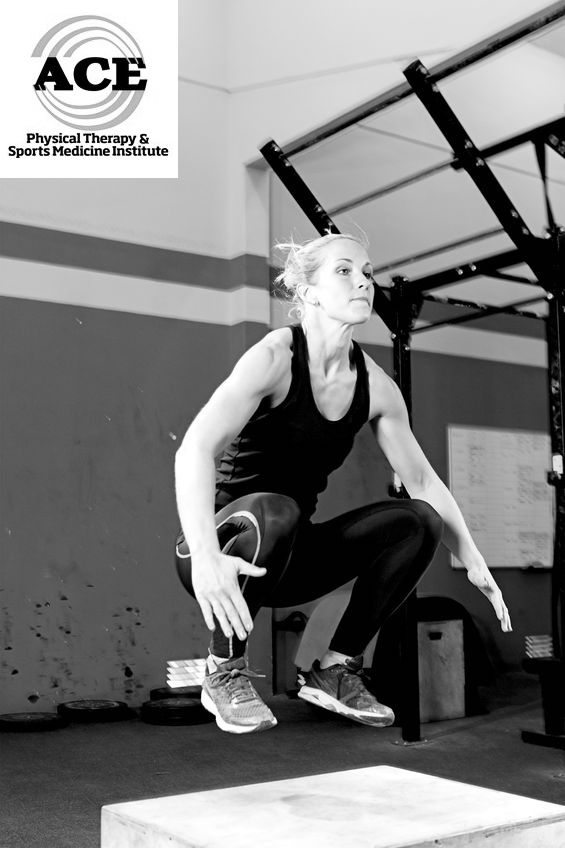ANTERIOR CRUCIATE LIGAMENT (ACL) TEARS PREVENTION PROGRAMS

Tid Bits of Info
- 70 – 80% of ACL injuries are “non-contact” injuries.
- ACL prevention programs have been shown to reduce the incidence of ACL tears by as much as 50%.
- A complete ACL tear will not heal without surgery.
- Women 3.5x more at risk to sustain a non-contact ACL injury than a man.
- Seek the advice and treatment of a Physical Therapist for an ACL prevention program.
Athletes and non-athletes alike can suffer from common knee injuries known as ACL tears. A tear of this ligament can end an athlete’s season and force a non-athlete to miss a significant amount of time from work if they have physically demanding job. Some people are more likely to suffer these injuries than others, and healthcare providers often assess athletes to help determine if they are more likely to suffer an ACL tear. Fortunately, there are programs or specific exercises that can reduce the chances of suffering this type of injury.
The ACL is one of two intraarticular ligaments of the knee joint that acts as a static stabilizing structure for the joint. The ligament is a leather-like tissue that attaches to femur and tibia and prevents excess rotation and anterior movement (translation) of the femur on the tibia. If too much force acts on the ligament, it can tear or rupture.
There are many theories of the predisposition of ACL injuries in particular athletes. Both sexes are effected and suffer these injuries, but female athletes are more susceptible. There has never been one specific anatomic or physiological finding that can predict if someone is going to suffer an ACL injury. Females are more prone to these injuries for many reasons. Most of these findings are based on the post pubescent female when compared to post pubescent male athletes. These female athletes have lower peak force production in their quadriceps, higher ground reaction forces when they land and many have an increased amount of internal rotation and valgus of the femur upon contacting the ground when they run or jump. The anatomy of their pelvis places their knee at a different angle that can pre-dispose them to ACL injuries.
The frequency of ACL tears has been shown to be reduced if an athlete is placed into an ACL prevention program. These programs have grown in popularity and if done consistently are very successful. These programs focus on educating the athlete on the proper way to land after jumping, correcting their running gait, strengthening their core and lower extremities by having them perform exercises and activities that are geared at developing proper neuromuscular control of the knee joint during activity. The nervous system “controls” the function of the muscle and joints and if it is not “educated” to do so, there can be injuries to many structures. The education process simply has the athlete perform exercises that challenges their system and prepares it for future athletic competition movements. Performing agility drills, working on the proper jumping and landing techniques during the plyometric drills has proven to be successful at reducing the frequency of ACL injuries. Most ACL injuries occur when the athlete is decelerating or changing positions laterally. Rarely are they due to contact. In theory, if the nervous system, joint structures and muscles are “trained” in a manner that simulates the movements and forces that the body will have to contend with during athletic competition they are prepared to handle those forces and can avoid an injury.

Physical Therapists who specialize in the treatment of orthopeadic injuries and rehabilitation are able to educate athletes with a thorough exercise routine that will enhance the athlete’s ability to avoid an ACL injury. These licensed healthcare professionals will incorporate a pre-screen test and a complete exercise routine that incorporates strengthening the core and lower extremities and developing muscular endurance and flexibility throughout the body. Visiting a Physical Therapist does not require a doctor’s prescription but your insurance plan might have you get a referral from your general practitioner.
ACL tears prevention programs are very successful of reducing the frequency of occurrence of a non-contact ACL injury. If the program is performed consistently the program can reduce the frequency as much as 50%. Women need to be aware that they are more susceptible to these injuries for a number of anatomic and physiologic reasons, but following a well-designed exercise program can reduce ACL injuries significantly.
